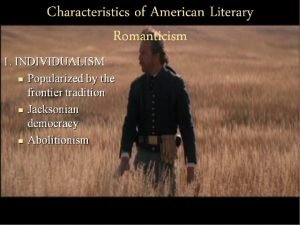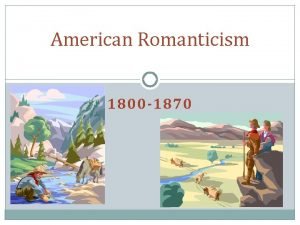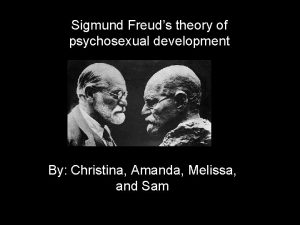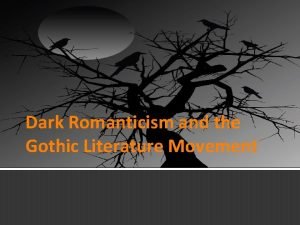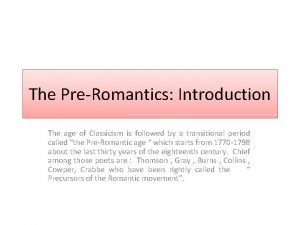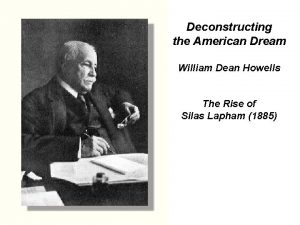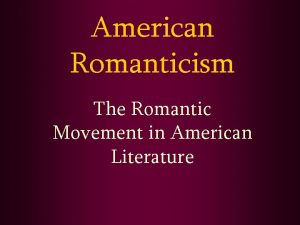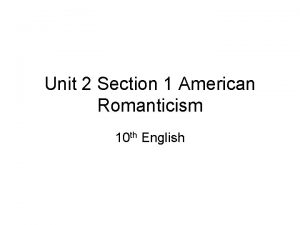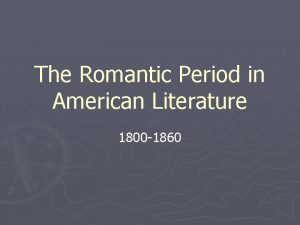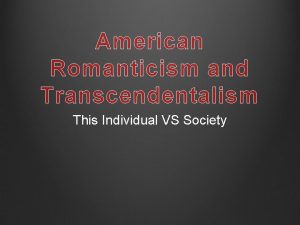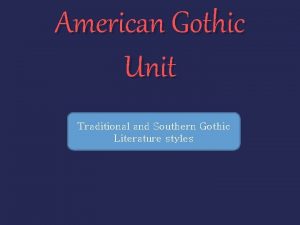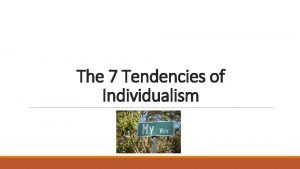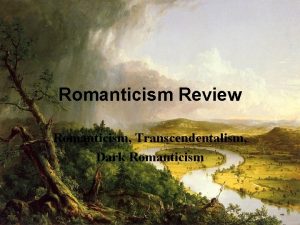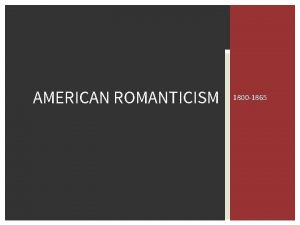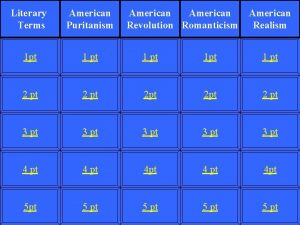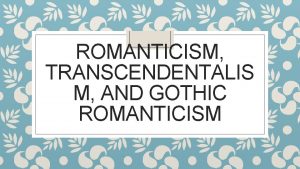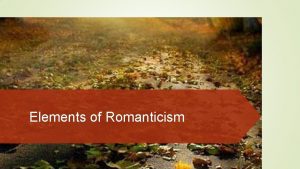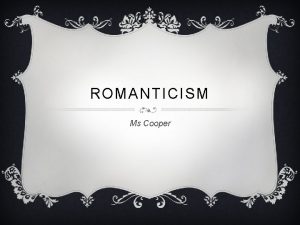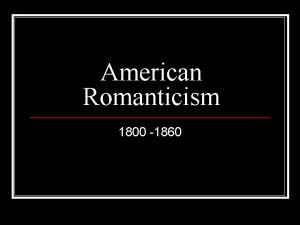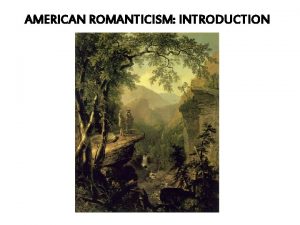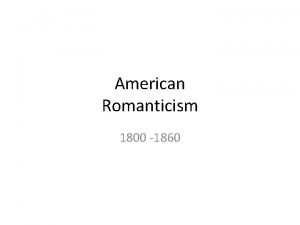Characteristics of American Literary Romanticism 1 INDIVIDUALISM Popularized














- Slides: 14

Characteristics of American Literary Romanticism 1. INDIVIDUALISM – Popularized by the frontier tradition – Jacksonian democracy – Supported Abolitionism

2. IMAGINATION – Reaction against the earlier age’s emphasis on Reason – Abandonment of literary tradition in favor of experimentation – “Organicism”: every idea held within it an inherent structure

3. EMOTION – Feeling is now considered superior to rationality as the mode of perceiving and experiencing reality – Intuition leads one to truth – Truth/reality are now highly subjective

4. NATURE – The means of knowing Truth • God reveals himself solely through Nature • Nature becomes a moral teacher – The actual subject matter of the Romantics

5. DISTANT SETTINGS – Both in terms of time and place – Used to comment on attitudes of the time period

The Fireside Poets America’s First Literary Stars

What are the Fireside Poets? • First group of American poets to rival British poets in popularity in either country. • Notable for their scholarship and the resilience of their lines and themes. • Preferred conventional forms over experimentation. • Often used American legends and scenes of American life as their subject matter.

Who were the Fireside Poets? • Henry Wadsworth Longfellow • William Cullen Bryant • James Russell Lowell • Oliver Wendell Holmes • John Greenleaf Whittier

Henry Wadsworth Longfellow • 1807 -1882 • Composed “Song of Hiawatha”, • “Paul Revere’s Ride” • “Psalm of Life” • “The Day Is Done” • Translated Dante’s Inferno from Italian into English

William Cullen Bryant • 1794 -1878 • Composed “To a Waterfowl” and “Thanatopsis” • One of the founders of the Republican party and supporter of Lincoln

James Russell Lowell • 1819 -1891 • Composed “The First Snowfall” and “The Present Crisis” • Active in anti-slavery causes

Oliver Wendell Holmes • 1809 -1894 • Medical doctor – invented the term “anesthesia. ” • Composed “Old Ironsides, ” which saved the U. S. S. Constitution from the scrap yard • Father of Supreme Court Justice Oliver Wendell Holmes, Jr.

John Greenleaf Whittier • 1807 -1892 • Composed Snow-bound , “Maude Muller” and “Barefoot Boy” • Active in anti-slavery movement

Lasting Impact • Longfellow remained the most popular American poet for decades. When Poe criticized him, he was all but ostracized. Longfellow remains the only American poet to be immortalized by a bust in Westminster Abbey’s Poets’ Corner • They took on causes in their poetry, such as the abolition of slavery, which brought the issues to the forefront in a palatable way. • Through their scholarship and editorial efforts, they paved the way for later Romantic writers like Ralph Waldo Emerson, Henry David Thoreau, and Walt Whitman.
 Individualism romanticism
Individualism romanticism American romanticism characteristics
American romanticism characteristics American romanticism characteristics
American romanticism characteristics Oral stage of development examples
Oral stage of development examples Tcole cultural diversity 3939
Tcole cultural diversity 3939 Themes of dark romanticism
Themes of dark romanticism Pre romantic poetry characteristics
Pre romantic poetry characteristics The romanticism (1795 — 1835) what is romanticism
The romanticism (1795 — 1835) what is romanticism William dean howells editha summary
William dean howells editha summary Difference between romanticism and classicism
Difference between romanticism and classicism Unit 2 american romanticism
Unit 2 american romanticism Romantic period in american literature
Romantic period in american literature American romanticism and transcendentalism
American romanticism and transcendentalism Modern american gothic
Modern american gothic Romanticism period in american literature
Romanticism period in american literature
